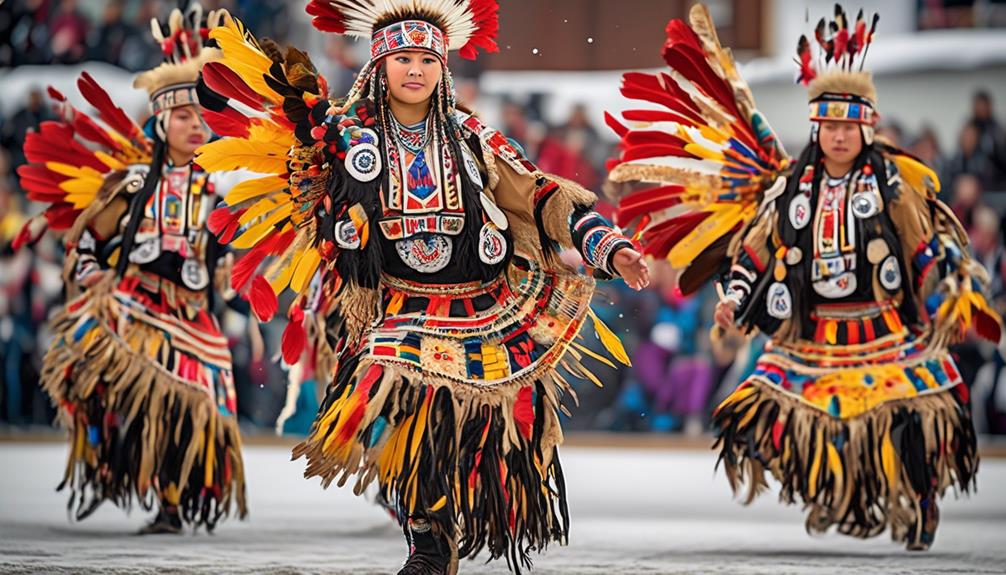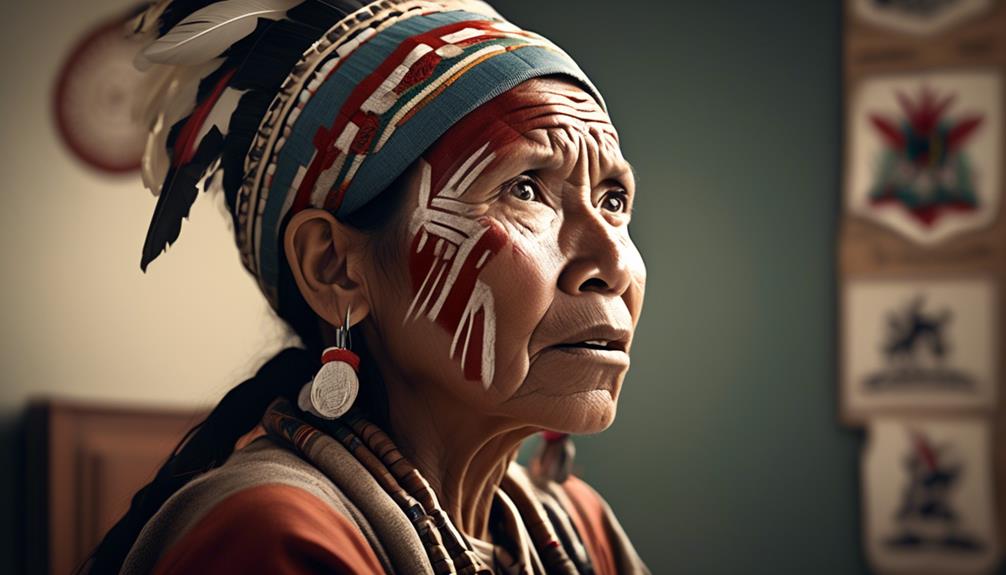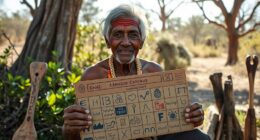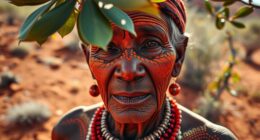Indigenous cartography is reshaping Australia’s map by highlighting ancestral ties, sacred sites, and cultural stories that go beyond Western borders. Instead of fixed boundaries, it emphasizes relationships between land, water, and spirit, asserting land rights through spiritual and cultural significance. These maps serve as acts of resistance and preservation, connecting communities to their heritage. If you keep exploring, you’ll discover how these traditional practices continue to influence land recognition and cultural identity today.
Key Takeaways
- Indigenous cartography emphasizes relationships and spiritual connections over fixed borders, challenging Western notions of land boundaries.
- Traditional maps preserve cultural stories, laws, and sacred sites, serving as living records of Indigenous knowledge.
- Contemporary initiatives reclaim and formalize Indigenous maps, integrating them into land management and legal processes.
- Indigenous mapping acts as cultural resistance, asserting sovereignty and redefining Australia’s geography from ancestral perspectives.
- These maps deepen understanding of Indigenous Australians’ enduring connection to their land, fostering cultural resilience and preservation.
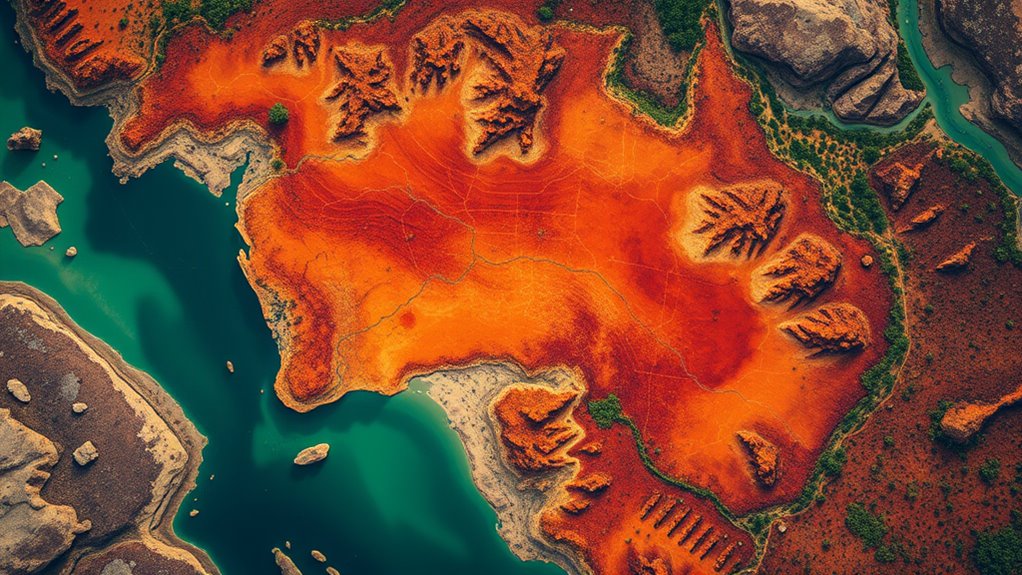
Have you ever wondered how Indigenous Australians have mapped their lands for thousands of years? Their cartography isn’t just about navigation; it’s a profound expression of land sovereignty and cultural preservation. For countless generations, Indigenous communities have created intricate maps rooted in Dreamtime stories, oral traditions, and spiritual connections to the land. These maps serve as more than geographical references—they embody a deep understanding of territory, resource locations, and sacred sites, all woven into a living cultural fabric. Moreover, these traditional mapping practices often utilize encryption solutions such as symbolic markings and oral transmission to protect sacred knowledge from outsiders. When you explore Indigenous cartography, you realize that these maps challenge Western notions of land boundaries. Instead of fixed borders, they emphasize relationships—between people, land, water, and spirit. This approach reinforces land sovereignty by asserting the community’s custodianship over their traditional lands. It’s a way of saying, “This land is ours,” not just through legal titles but through ancestral ties and spiritual significance. This act of mapping becomes a form of cultural resistance, asserting Indigenous rights and asserting their enduring connection to the land despite colonial displacement. Moreover, Indigenous cartography plays a essential role in cultural preservation. Every map, whether etched into rock, painted on bark, or shared orally, carries stories, laws, and knowledge passed down through countless generations. These maps preserve languages, sacred sites, and traditional ecological knowledge that might otherwise fade away. They keep alive the stories that define their identity, ensuring that future generations understand their history and responsibilities. In this way, cartography becomes a powerful tool for maintaining cultural integrity, reinforcing the worldview that sees the land as a living ancestor deserving respect and stewardship. You can see this in contemporary efforts where Indigenous communities are working to reclaim and formalize their traditional maps. These initiatives often involve collaborative projects that respect Indigenous knowledge systems, integrating them into official land management and planning processes. Such efforts are indispensable for asserting land sovereignty and safeguarding cultural practices. When Indigenous Australians map their lands in ways that honor their traditions, they’re not only redefining Australian geography—they’re reaffirming their rights, identities, and cultural endurance. In essence, Indigenous cartography is a dynamic act of resistance and resilience. It redraws Australia’s map from a perspective rooted in ancestral knowledge, emphasizing sovereignty and cultural preservation. It reminds us that land isn’t just a commodity but a sacred inheritance, deserving of respect and careful stewardship. By understanding and valuing these maps, you gain a deeper appreciation of Indigenous Australians’ enduring relationship with their homeland and their ongoing fight to keep their culture alive.
Frequently Asked Questions
How Do Indigenous Maps Differ From Western Cartography?
You notice that indigenous maps differ from western cartography because they emphasize cultural significance and ancestral connections, rather than just territorial boundaries. You see that these maps often represent spiritual and community relationships, highlighting the land’s importance beyond borders. Unlike western maps, which focus on precise measurements, indigenous maps tell stories and preserve history, making the land meaningful for the community’s identity and traditions.
What Tools Are Used in Indigenous Mapping Practices?
Did you know that Indigenous mapping often combines traditional techniques with modern technology? You’ll see tools like storytelling, tattooing, and land surveys alongside GPS, drone imaging, and digital mapping software. Indigenous cartographers blend these methods to accurately represent cultural sites, boundaries, and stories. This fusion guarantees maps reflect not just geography but also cultural significance, helping preserve Indigenous knowledge while adapting to contemporary tools.
How Do Indigenous Maps Impact Land Rights Cases?
Indigenous maps impact land rights cases by highlighting cultural narratives that often go unrecognized in Western systems. When you use these maps, you support sovereignty assertions, demonstrating a deep connection to the land. They provide compelling evidence of traditional ownership, helping communities claim their rights. By emphasizing cultural significance and history, Indigenous maps strengthen legal arguments and promote respect for Indigenous sovereignty in land disputes.
Are Indigenous Maps Officially Recognized by Australian Authorities?
You might wonder if Indigenous maps have legal recognition by Australian authorities. While they’re increasingly acknowledged, full legal recognition remains limited. Some states and territories are starting to integrate Indigenous perspectives into policy, but national policy still largely relies on Western cartography. You’ll see growing efforts for policy integration, which could lead to more formal recognition in the future. For now, Indigenous maps influence discussions but lack widespread official status.
How Do Indigenous Maps Incorporate Cultural Knowledge and Stories?
You see, Indigenous maps incorporate cultural storytelling by weaving ancestral connections into their design. These maps don’t just show land; they tell stories of Dreamtime, sacred sites, and kinship ties. By doing so, they preserve and share cultural knowledge, ensuring that ancestral connections remain alive. You can recognize that these maps serve as living records, honoring Indigenous heritage and offering a profound understanding of land through cultural storytelling.
Conclusion
By embracing Indigenous cartography, you’re witnessing a revolution that’s rewriting Australia’s entire map—no exaggeration. It’s as if the land itself is waking up, revealing secrets long hidden beneath colonial lines. This isn’t just about maps; it’s about reclaiming identity, history, and sovereignty on a scale so massive, it could change the course of the nation itself. Keep paying attention, because what’s happening now is nothing short of a seismic shift in how we understand this land.
Mary is a passionate writer who brings creativity and a fresh perspective to our team. Her words have the power to captivate and inspire, making her an essential contributor to our content. Mary’s commitment to storytelling and dedication to promoting Indigenous culture ensures that her work touches the hearts of our readers. We’re fortunate to have her as part of our team.





